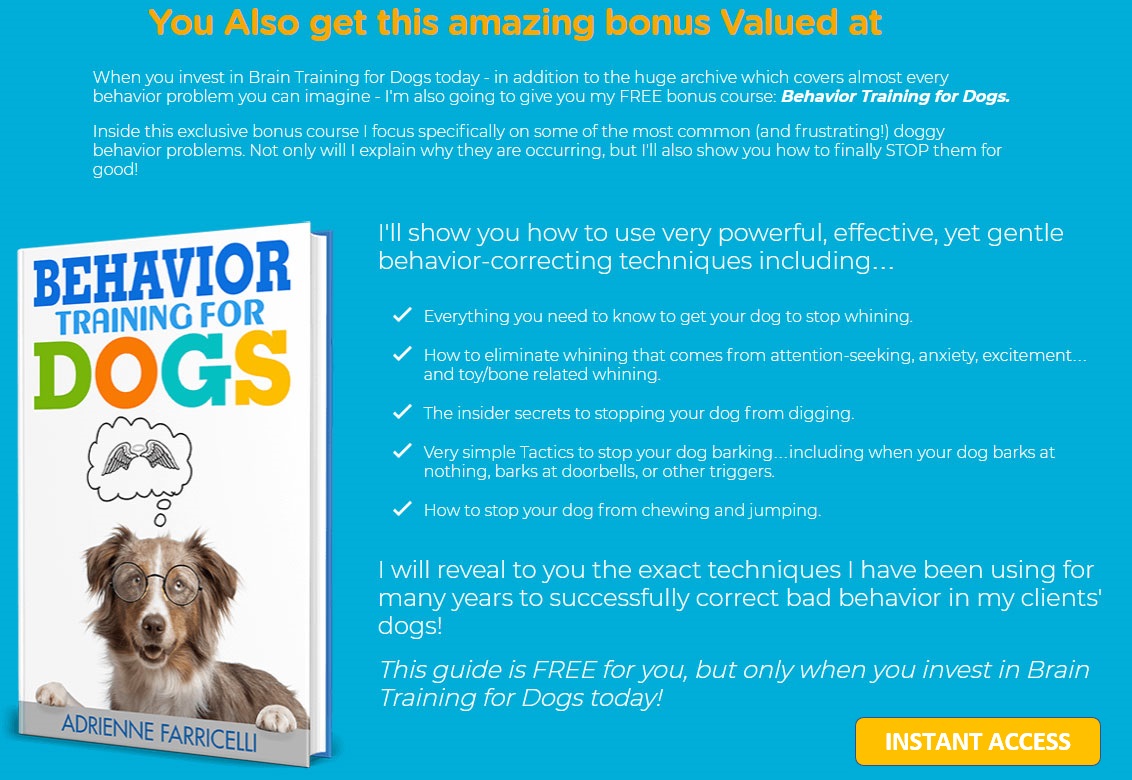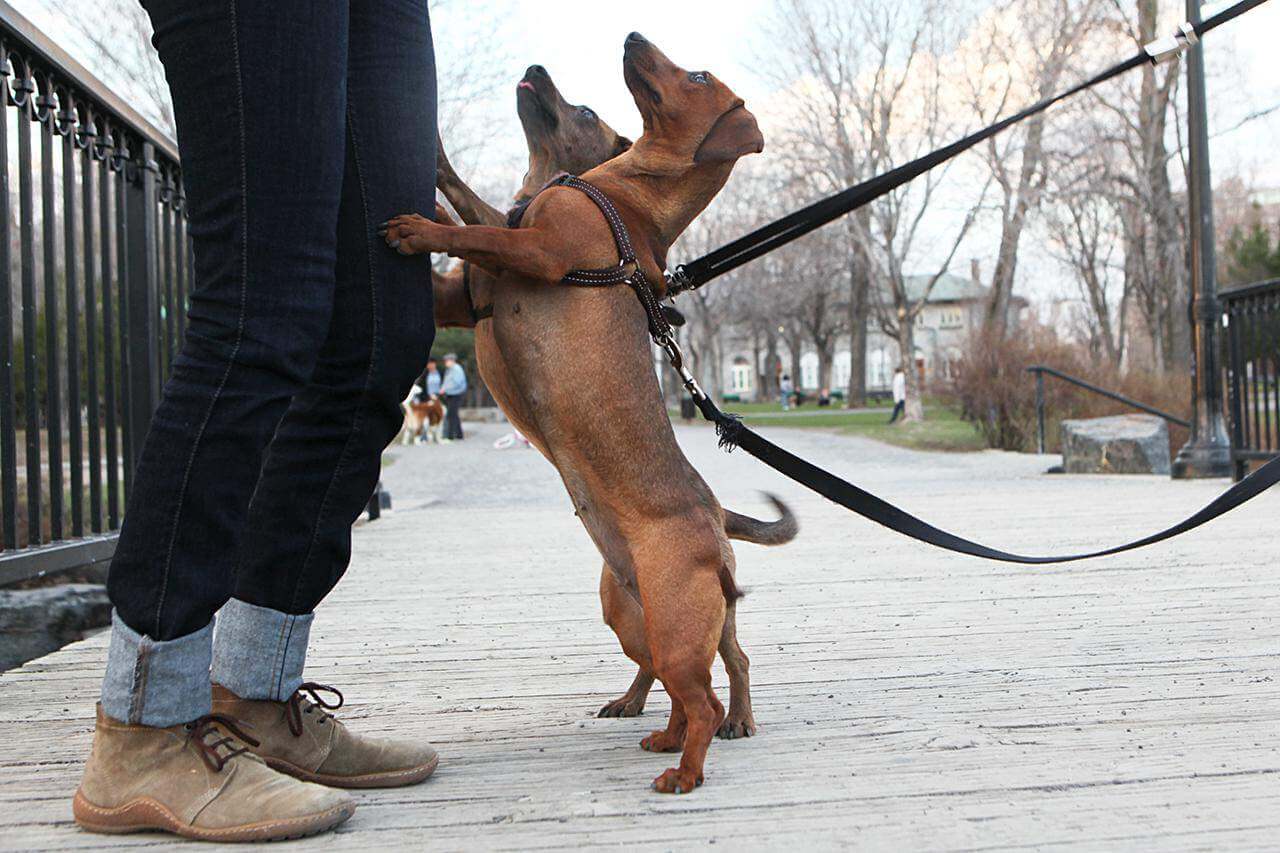My dog jumps on people
Your dog jumps on you, your guests or people you meet on a walk? You can't stand it anymore and you are looking for solutions to stop your dog from jumping?
I propose you here all the keys to understand this often embarrassing behavior: why your dog jumps, why he continues to do it when you forbid him to do so and especially all the tricks so that your dog does not even try to jump anymore.
My dog jumps: why?
We will elaborate on the different reasons why a dog may jump and especially how to prevent it, but here are the main ones:
• Your dog jumps because he knows that sometimes he gets satisfaction
• Your dog jumps because he wants your attention, and it works!
• Your dog jumps because he hasn't learned to wait and deal with his frustration
• Your dog jumps because he has an unfulfilled energy level that he is trying to get rid of
• Your dog jumps because you sometimes reward him for doing so (for example, to say hello)
My dog jumps to attract attention: how to react?
First of all, the first thing to know is that in 9 cases out of 10, the dog jumps, whether it is on you or your guests, because he gets satisfaction in his request for attention.
Let me explain, when a dog jumps, it's usually because he wants to get in touch, attract attention and why not get a reward. But, you may ask, why does he repeat this behavior when he is often "punished" for it? Well, simply because even a "punishment" is a form of attention, and therefore a reward (in your dog's mind). When you look at your dog, touch him or talk to him, even if it's to scold him, he considers this an interaction.
So when your dog jumps on you: ignore him! Ignoring your dog means not looking at him, not talking to him and not touching him. The trick will be to turn around completely, to turn your back to your dog when he jumps. And when he jumps on your guests, it is up to you to warn your guests beforehand and ask them to turn their backs to your dog and then it is up to you to take over and tell him to go to his place for example.
If you did not have time to warn your guests or if your guests do not manage to "play the game", you are responsible for your dog, so it is up to you to reframe your animal and possibly work upstream on the fact that your dog does not go to greet the guests (with the help of a step move for example). Clearly, cutting off all social interaction with your dog when jumping will create a new association in your dog: "I jump = I am ignored / I sit (for example) = I am stroked".
My dog jumps: ignoring him does not work!
When we advise you to ignore your dog when he jumps, the results are not always present, why? Well, simply because ignoring your dog can be a real work on you! And it's not easy!
If your dog understands that by insisting even more (by jumping on your back or by starting to chew on you for example), he will always end up getting satisfaction, you can be sure that the jumps will be repeated again and again, and in a more intense way each time.
Besides, managing to ignore your dog at the beginning and then finally giving in because it becomes unbearable, is clearly teaching your dog to insist, to persevere in his requests for contact and it is above all going against your initial objective.
Moreover, ignoring your dog when he jumps is to systematically ignore him, and this for all jumps! Indeed, many people will complain about their dog's wet and muddy jumps in winter but will gladly accept the same kind of contact when the weather is dry and the dog comes out of the toilletter's house for example... Consistent? NO!
Finally, to finish on this point: teaching your dog to stop jumping and ignoring you is not necessarily done in one day! Be patient and above all don't give up!
On the other hand, if after 2 weeks your dog still continues to jump, ask yourself the following questions to possibly readjust your attitude:
Am I ignoring my dog correctly?
Do I sometimes, when I'm upset, scold him to stop?
Are all the people with whom he makes contact assiduous in this process?
Do I systematically ignore my dog when he jumps?

My dog jumps: he is unmanageable and excited!
Then there are also dogs who, despite the fact that you ignore them again and again, continue to jump and/or find other ways to get your attention: barking, chewing, etc..
This is often the case with dogs that are in need of spending time and therefore have too much energy to get rid of at all costs!
So, the advice that follows from this point is obvious: you must spend your dog and make sure that his excess energy is filled and/or channeled. Indeed, if your dog is not spent and is too excited, you will not be able to educate him or ask him to calm down.
To spend your dog's energy, it is not enough to throw him a ball for 15 minutes in the garden!
Of course, you have to think about physical exercise (long daily walks, regular play sessions, etc.) but also about mental exercise (learning various tricks, reinforcing basic obedience, educational and fun games, etc.) and especially about olfactory exercise (varied walks rich in olfactory stimuli, tracking games, etc.).
Think also about occupation toys that will allow your dog to occupy himself (hence the name, right) but that, for some toys, will allow him to fill an important but often neglected chewing need in the dog and that also participates to spend his energy.
My dog jumps: how to deflect the behavior!
If your dog is sufficiently exhausted and ignoring him is not in your line, or if this technique is simply not adapted to your dog (it is quite possible, you must know how to readjust in these cases), you can then deviate towards another behavior, more acceptable.
Deviating towards another behavior is teaching the dog that this behavior A is not desired but that this behavior B will allow him to obtain. In other words, we are going to teach our dog indications to return to calm or to return to his zone to teach him that he does not have to manage contact.
In concrete terms, this means teaching your dog to go to the basket on request or, for example, teaching your dog to sit on request: when a dog sits, it does not jump. To do this, it is necessary to reinforce the educational basics first of all without stimuli (without guests for example) and especially when your dog has been sufficiently exercised. Indeed, as we have seen, you won't get anything out of a dog that is too excited, especially for calm exercises.
My dog jumps: how to manage contacts?
I talked earlier about contact management. Indeed, your dog (without talking about submission or dominance) must understand that he doesn't have to manage contacts, but that it's up to you, as a referent, to decide if he can come in contact or not.
Why do you say that, well, simply so that you don't have to read articles like this one anymore to solve a problem of contact with your dog... Namely here: the jumps!
Thus, a notion that will be very important to integrate and apply on a daily basis (whether for you or for your dog): giving up is winning!
In concrete terms, you will teach your dog that as soon as he gives up an intention of contact (that he returns to his place, that he sits down or that he waits) then, he will get satisfaction: I give up, I win! And no more I jump, I insist, I win!
This advice can be accompanied by the technique of ignoring your dog when he jumps. As soon as your dog jumps on you, ignore him by turning his back and as soon as he calms down: accept to make contact with him. This way your dog understands that you are the one initiating the contact and that when he initiates the contact, it doesn't work.

